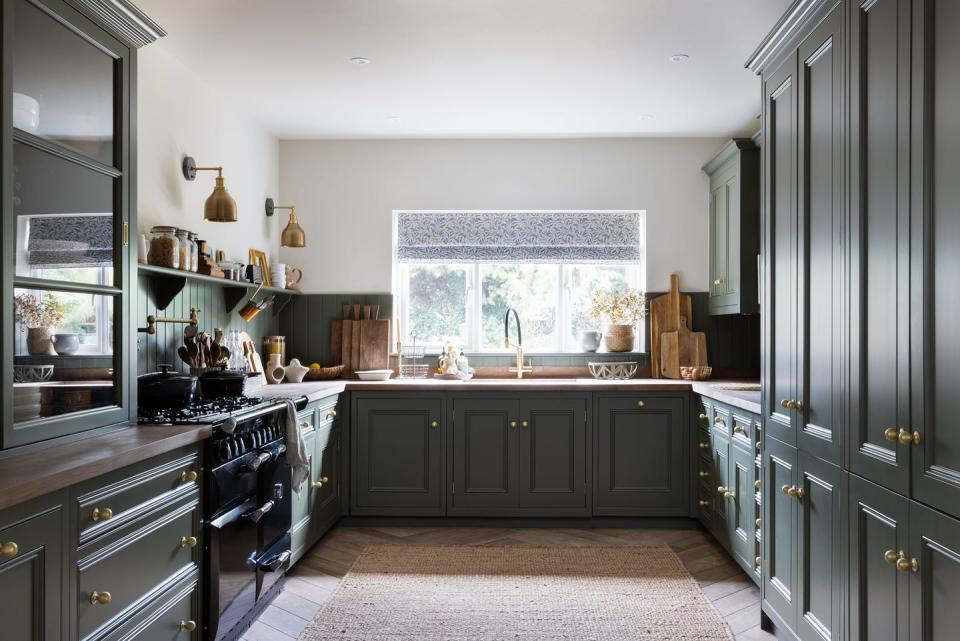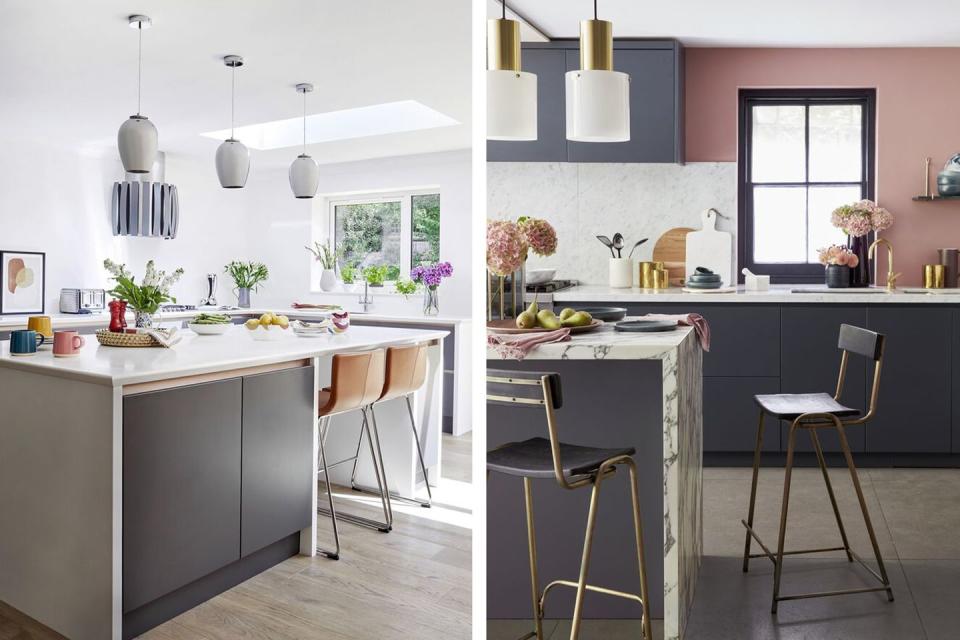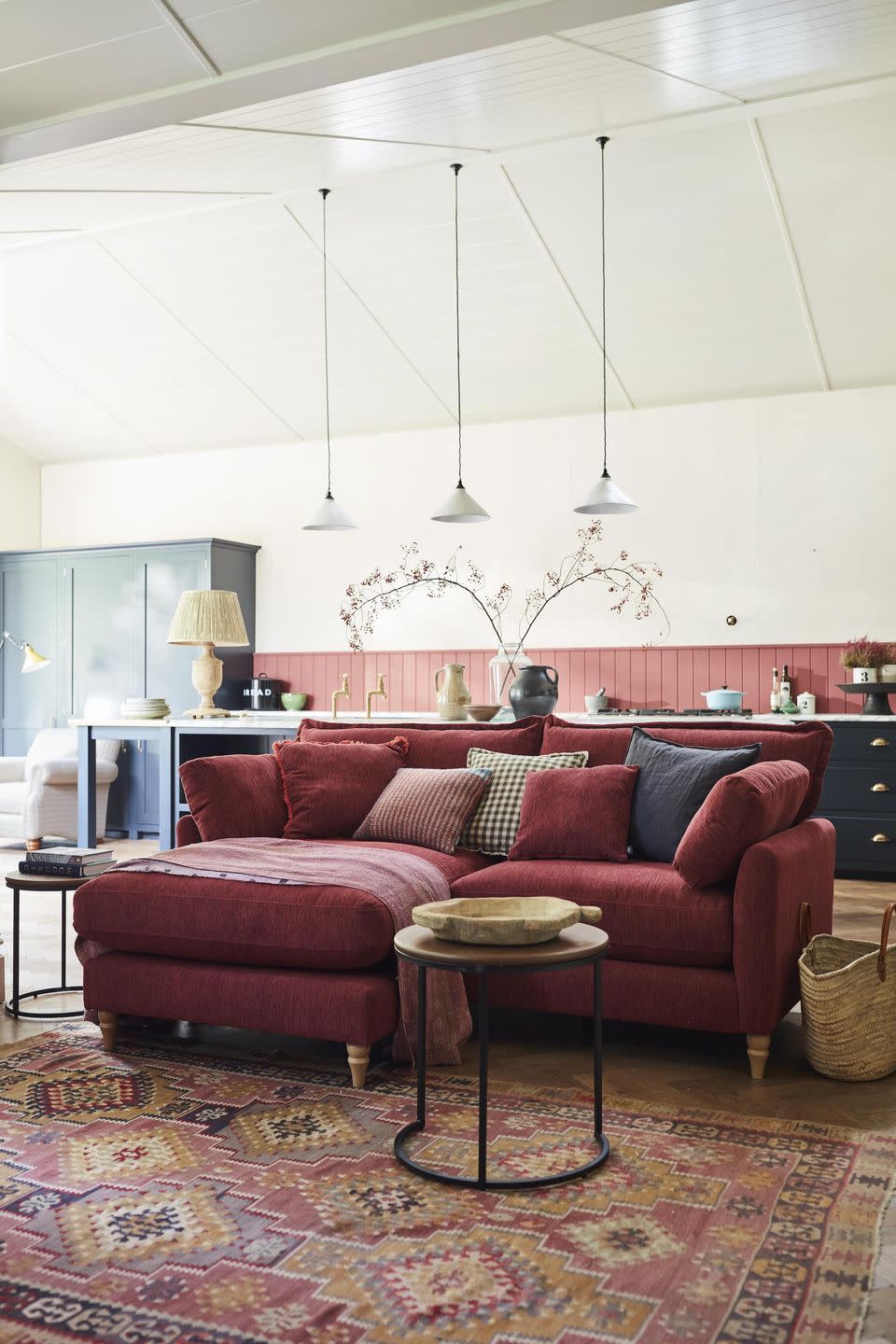Kitchen layout ideas: How to arrange your space no matter the shape or size
Kitchen layouts can be tricky to navigate. Your kitchen is the most demanding room in the home, balancing plenty of storage with working counter space, hard-wearing materials with areas conducive to entertainment, and designed in a logical flow between appliances and within zones.
All of the above can throw up some design dilemmas – is your space just big enough to accommodate a galley kitchen, in which case should you fill the space with storage? Should you arrange your units under or opposite windows? Can you add an island or would a peninsula be a more sensible option? And how much space should you leave for a comfortable walkway?
'The layout of the room is what makes a kitchen design successful. When starting to plan your kitchen, the most important thing to consider is how you use your space,' says Tom Howley, design director of the eponymous kitchen company. 'The overall design of the kitchen should focus on the balance of scale and proportion.'
Here we look at kitchen layout ideas for rooms large and small, with design notes to help you execute the look in your own home.
A galley kitchen

A galley kitchen is usually very narrow, with units fitted along one or both walls.
Floor space between the units needs to be at least 1.2m to ensure comfortable access to cupboards and drawers. With units on both sides, the sink, cooker and fridge are best positioned conveniently close on either side, not directly opposite each other. On a single run, place the sink in the middle with the fridge and cooker on either side, leaving at least 1.2m between them if possible.
‘In narrower kitchen spaces, everything can be within arms-length, making it easy for a designer to plot an efficient ‘golden triangle’ of cooker, fridge and sink,' says Tom. 'This layout is appealing because it’s intimate, functional, easy to work in and can look stunning with beautiful floor-to-ceiling cabinetry.
'Galley kitchens work best when using the full height of the kitchen, so long, slim pantries that allow you to store less-used items on the higher shelves are a great idea.'
Design notes
A run of overhead cabinets can feel oppressive in a galley kitchen – open up your walls to create a sense of space and replace cabinets with shelving.
Avoid the temptation to line up your appliances on a single unit – it can make your kitchen look like a supermarket aisle.
If structural work is feasible, consider replacing doors with archways to create a sense of openness.
An L-shaped kitchen

An L-shaped layout is an open arrangement with a table or island added if space allows. It's easy to retain the work triangle of sink, fridge and oven by spacing them out on both walls – in amongst them, combining a section of tall cupboards with floor and wall units creates varied storage and breaks up the layout.
‘The classic L-shaped layout works well in kitchens of all sizes. Its shape is timeless, so it’s ideal for new and traditional homes,’ says Tom. ‘The L-shape is flexible, and bespoke cabinetry brings this layout to life as the kitchen can be built to enhance soaring ceilings and large picture windows or to highlight or disguise quirky corners and alcoves.’
If you're choosing where to position your L-shaped kitchen, consider your windows first and foremost. This is a great example from Pluck – here cabinets are placed directly opposite a large source of natural light, brightening up work surfaces and leaving space under the window for a small bistro table or window seat.
Design notes
Good lighting is important in an L-shaped kitchen as natural light may not reach the whole room.
It's a good idea to install a floor to ceiling cupboard or pantry at one end of your L-shape – the symmetry created by installing one at both ends can look a little contrived.
U-shaped kitchen

This wraparound layout is formed by lining three walls with cupboards or by lining two walls and installing a peninsula.
‘U-shaped kitchens are incredibly flexible, which makes them popular in kitchens of all sizes,' says Tom. 'The shape offers the most worktop space if you have a smaller kitchen. If you have a larger kitchen footprint, U-shaped islands with open or closed units can be a show-stopping centrepiece offering multiple zones for various activities.'
The U-shaped kitchen takes the most planning in terms of flow and layout. They tend to be very large, so there are lots of decisions to be made when it comes to positioning appliances and adding storage. The size of the U-shaped kitchen does mean you can forgo some overhead cupboards in favour of decoration or open shelving.
And whilst three walls of cupboards is a luxury in a hardworking kitchen, the choice of a peninsula is a more sociable one. 'The hardworking peninsula kitchen layout works beautifully in an open-plan kitchen – especially if you want to embrace the concept of zoning and enjoy having designated areas for cooking, eating and relaxing,' says Tom. 'The peninsula design can work with a number of kitchen floor plans, making it look and feel both functional and sociable. You can even have fun with your cabinetry colour scheme to add depth and movement to your space.’
Design notes
The corners of a U-shaped kitchen would ideally be fitted with flexible pull-out storage to be as useful and accessible as possible.
Great swathes of matching cabinetry in a U-shaped kitchen can look overwhelming, so add in plenty of visual breaks like splash backs, a contrasting counter top, a tall free-standing fridge, or large cooker hood.
A kitchen with an island

The centralised island is one of Tom Howley's most popular and enduring kitchen layouts. 'It’s in a handy position that allows you to utilise every inch of space, and many of ours have built-in appliances which free up wall cabinets,' says Tom. 'By centralising cooking or preparation areas, it makes the kitchen much more sociable, allowing the chef to talk to others as they get dinner ready instead of standing with their back to family and friends.
Kitchen islands start at around 1m square, which is enough to install appliances such as a hob, wine cooler or small sink. A modest worktop overhang of 30cm to 45cm will create a breakfast bar to use with stools. It's certainly not a feature for small kitchens as you'll need at least 1.2 m between the island and your kitchen units or wall.
The kitchen island is a great spot to experiment with colour – a totally different colour to the rest of your kitchen won't look jarring, and in fact it makes for a great feature. Match your countertops to create some cohesion with the rest of the space.
Design notes
If you're installing a new kitchen island, you will need to think about directing the electricity and water supply to the centre of the room, which will add to your costs.
For smaller kitchens, a more modest island can be set on castors to roll away when not in use.
An open-plan kitchen

As our homes become smaller, it's increasingly common to have an open-plan kitchen/living room space. Here, the kitchen units are usually contained to one wall, occasionally a modest island or peninsula will act as a divider.
The dilemmas here are usually less concentrated to the layout of the cupboards and appliances, and more in the division of the space into distinct living/cooking areas without forgoing some design cohesion.
There is usually sense in creating a single colour palette for both spaces – the deep blues and a touch of burgundy are used in both kitchen and living room here – and in the absence of a kitchen island, a large sofa is a sensible way to divide the space.
'Start by marking out the area that will be used for each space,' says Nomita Vaish-Taylor, Founder and Editor at yourdiyfamily.com. 'I usually recommend giving more space to the area used more, which is almost always the living room. Most importantly you want to have some empty floor space between the two areas. The goal here is to create two clearly defined spaces that still look cohesive and flow into each other. The best way to get the layout right is to experiment and move furniture around until the layout works.'
Design notes
Good ventilation is crucial in an open-plan kitchen to mitigate cooking smells.
If you install a peninsula, creating a worktop overhang will allow for a breakfast bar to use with stools.
Follow House Beautiful on TikTok and Instagram.
You Might Also Like

 Yahoo Finance
Yahoo Finance 
